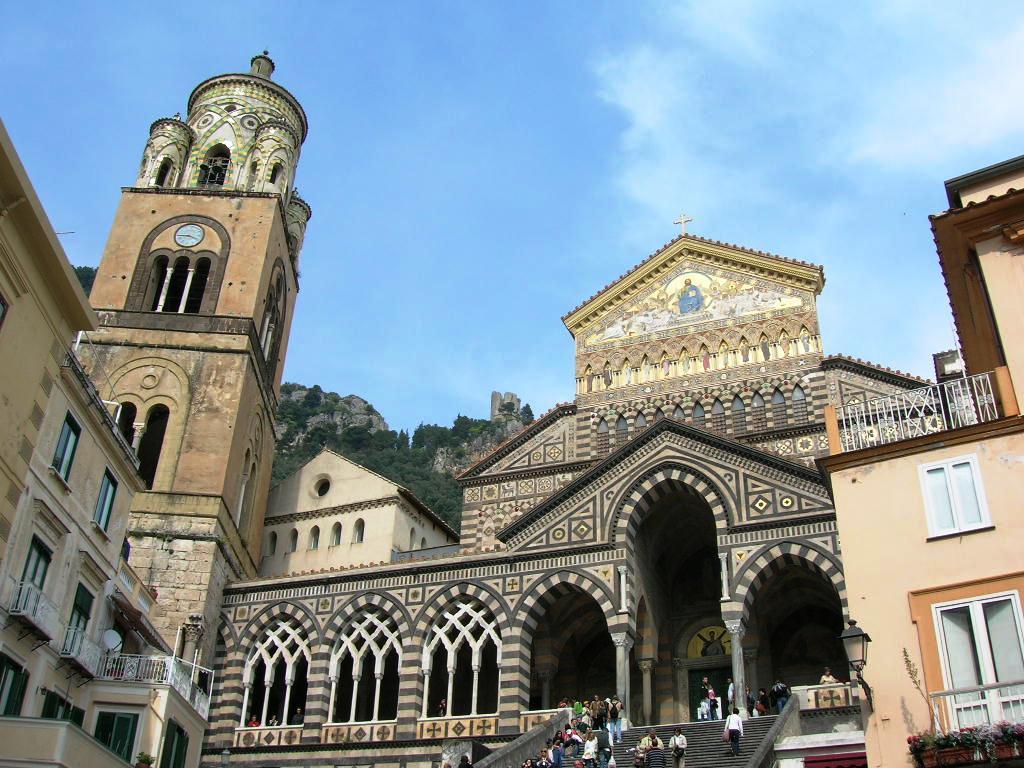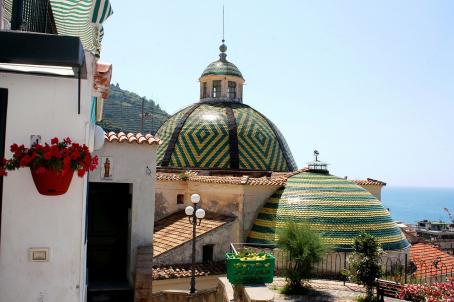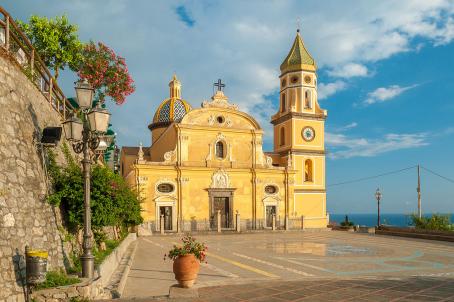Cathedral of Amalfi

The cathedral of Amalfi is composed of two churches: the first one was founded in the 9th century, and in 987, another church was built right next to the cathedral. Soon the two churches, both with three naves, were joined together and thus formed a single Romanesque church with six naves. In the period following the Counter-Reformation, the two buildings became separate again and the older one became the Basilica of the Crucifix, leaving the title of caricature to the building of 987. Other interventions took place between the 16th and 18th centuries. The present façade was built in the 19th century by Errico Alvino assisted by a group of architects. The bell tower of St Andrew's Cathedral was built between 1108 and 1276.




